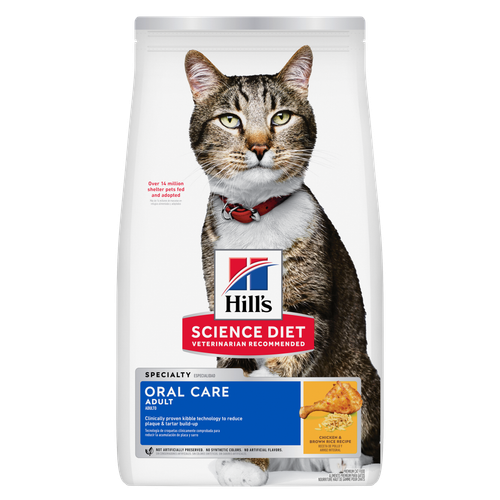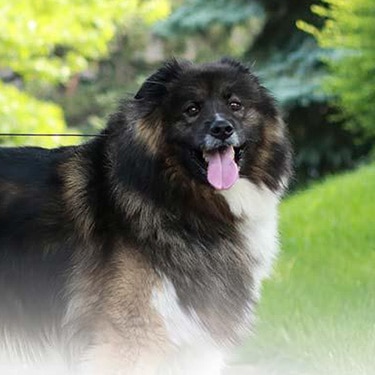
-
Find the right food for your petTake this quiz to see which food may be the best for your furry friend.Find the right food for your petTake this quiz to see which food may be the best for your furry friend.Health CategoryFeatured products
 Adult Large Breed Chicken & Barley Recipe Dog Food
Adult Large Breed Chicken & Barley Recipe Dog FoodSupports healthy joints, lean muscle, and beautiful coat for large breed dogs
Shop Now Adult Light Large Breed Chicken Meal & Barley Recipe Dog Food
Adult Light Large Breed Chicken Meal & Barley Recipe Dog FoodFewer calories for less active large breed dogs
Shop Now Hill's Science Diet Adult Healthy Mobility Large Breed Chicken Meal, Barley & Brown Rice Recipe Dog Food
Hill's Science Diet Adult Healthy Mobility Large Breed Chicken Meal, Barley & Brown Rice Recipe Dog FoodAdvanced nutrition shown to support joint health and improve mobility
Shop NowFeatured products Adult Sensitive Stomach & Skin Pouch Variety 12 Pack Cat Food, Chicken & Beef, Salmon & Tuna
Adult Sensitive Stomach & Skin Pouch Variety 12 Pack Cat Food, Chicken & Beef, Salmon & TunaCarefully made, gourmet daily nutrition. Tasty chunks with Salmon & Tuna in a decadent gravy. Supports digestive health, nourishes skin and promotes a lustrous fur.
Shop Now Adult Perfect Digestion Chicken, Barley & Whole Oats Recipe Cat Food
Adult Perfect Digestion Chicken, Barley & Whole Oats Recipe Cat FoodHill's Science Diet's breakthrough nutrition supports ultimate digestive well-being & healthy microbiome
Shop Now Adult Oral Care Chicken & Brown Rice Recipe Cat Food
Adult Oral Care Chicken & Brown Rice Recipe Cat FoodClinically proven kibble technology to reduce plaque & tartar build-up
Shop Now -
DogCat
- Cat Tips & Articles
-
Health Category
- Weight
- Skin & Food Sensitivities
- Urinary
- Digestive
- Kidney
- Dental
- Serious Illness
-
Life Stage
- Kitten Nutrition
- Adult Nutrition
Featured articles Fun Ideas for Kids and Pets This Summer
Fun Ideas for Kids and Pets This SummerOutdoor summer activities with your dog or cat can be fun for kids, too. Learn how they also teach kids responsibility & creates a bond with their pet.
Read More Cat vs. Dog: Which Is the Best Pet for Me?
Cat vs. Dog: Which Is the Best Pet for Me?Learn about important differences between dogs and cats, such as cost & space considerations. These factors can help you decide which pet is best for you.
Read More Adopting a Pet: What You Need to Know
Adopting a Pet: What You Need to KnowLearn the basics of adopting a pet, including where to begin and common questions you should ask yourself when deciding which kind of pet is best for you.
Read More -


What is that you hear? It couldn't be your dog choking, could it? As you run over to him, scared that some of his dinner is lodged in his throat, you realize that you don't even know if there's a Heimlich maneuver for dogs. If there is, you certainly don't know how to do it. Luckily, your dog was just fine, and those choking sounds may have taken place because something went "down the wrong pipe", as humans say.
But what if you found your dog choking for real? Something might be lodged in his throat or mouth, and it's important to know how to save a dog that is choking on his food. Of course, you'd want to get your dog to the veterinarian's office or an emergency clinic, but you can't wait for their help. You need to be able to act immediately to save your dog's life. Here's how.
Identifying Dog Choking Signs Before It's Too Late
One of the first things you might notice if your dog is having trouble with a small amount of food being stuck is coughing, as your dog is trying to expel the item. He may also have difficulty inhaling, says BanfieldPet Hospital. Another sign of a dog choking will be pawing at the mouth or head. A dog that is unconscious is another very serious indicator that your dog may have choked (or something else is seriously wrong).
It's important to pay close attention to these signs, but realize they also might mean something different. For example, a cough could be a cold symptom and pawing at the face could mean something got into your dog's eyes.
What to Do If Your Dog Is Choking
When you notice any of the above signs, check your dog's mouth, if possible, to see if any food is trapped or lodged inside. Remember that your dog is scared, and a scared dog may be anxious and unpredictable. Be careful with your approach, but remember you are your dog's lifeline. If you can safely check his mouth and there is food inside, see if you can swipe it away safely with your finger so that your dog will be able to breathe again.


Tasty Tips
What Happens If You Can't Dislodge Stuck Food?
There's a chance that you won't be able to remove what your dog is choking on. In this case, you'll have to do the Heimlich maneuver for dogs. PetMD suggests carefully turning over little dogs and putting pressure on their upper abdomen, right beneath the rib cage. For large breeds, PetMD recommends not picking them up, but putting your arms around the dog so they join at his abdomen. Then, make a fist with your hands and push up and forward, just like you would for humans.
PetGuide provides a diagram on its website showing how to hold your dog, and suggests the following pattern:
- Hold your dog by the back paws and tip him up in a "wheelbarrow pose."
- Wrap your arms around his abdomen and use both hands to press hard five times below his ribs.
- Quickly sweep his mouth with a finger.
- Place him in a standing position and give him five sharp taps between the shoulder blades.
Doing this should dislodge food, but be sure to check the mouth and help remove any food that may be loose in the back of your dog's mouth so he doesn't choke or swallow what was previously bothering him. If your dog stops breathing and falls unconscious, PetCoach also offers instructions for performing rescue breaths.
Taking Care of Your Dog After Choking
When a dog chokes, contact his vet immediately, especially if he was unconscious at any point. It's likely the vet will want to see your pet right away to make sure the choking didn't do any additional harm to your dog's body that you can't see. You love your pet like a member of your human pack, so you'd do anything to make sure he's happy and healthy.
To prevent chances of your dog choking in the future, make sure to keep an eye on anything that could be a potential choking hazard. Dog food is typically formulated with dog's size in mind, but if you have a big and a small dog, there is a chance your smaller dog could choke on a large breed food if he has access to it. If this is the case, it might be a good idea to separate their feeding stations until you know your little dog will leave the other dog's food alone. However, choking on food can still happen — just think of the last time you accidentally got food lodged in your windpipe. So, it's a good idea to monitor your dog when he is eating. Additionally, make sure to clean up anything your dog could potentially choke on beyond food. Baby and child toys can often pose a potential choking threat to your pup, so make sure they are put away. When choosing dog toys, make sure they are sturdy and that pieces won't break off of them and get lodged in your dogs throat.
A choking dog is surely a scary thing, but by recognizing the signs and being prepared with the knowledge of what to do if your dog is choking, you can help keep your dog safe and healthy.


Erin Ollila believes in the power of words and how a message can inform—and even transform—its intended audience. Her writing can be found all over the internet and in print, and includes interviews, ghostwriting, blog posts, and creative nonfiction. Erin is a geek for SEO and all things social media. She graduated from Fairfield University with an M.F.A. in Creative Writing. Reach out to her on Twitter @ReinventingErin or learn more about her at http://erinollila.com.
Related products

Fewer calories for less active large breed dogs

Supports healthy joints, lean muscle, and beautiful coat for large breed dogs

Advanced nutrition shown to support joint health and improve mobility

Fewer calories for less active dogs
Related articles

A little exercise can make a big difference. Not only will it enhance your pet’s health, but it will beef up your relationship as well.

Though it may seem like your four-legged friend loves nothing more than to nap on the couch, dogs need regular exercise to stay healthy just like people do.

Learn how to stop your dog from begging at the dinner table, and understand how it can help contribute to his health.

Learn about choosing the right dog food to help ensure your mature older dog will receive the correct balance of nutrition.

Put your dog on a diet without them knowing
Our low calorie formula helps you control your dog's weight. It's packed with high-quality protein for building lean muscles, and made with purposeful ingredients for a flavorful, nutritious meal. Clinically proven antioxidants, Vitamin C+E, help promote a healthy immune system.
Put your dog on a diet without them knowing
Our low calorie formula helps you control your dog's weight. It's packed with high-quality protein for building lean muscles, and made with purposeful ingredients for a flavorful, nutritious meal. Clinically proven antioxidants, Vitamin C+E, help promote a healthy immune system.

